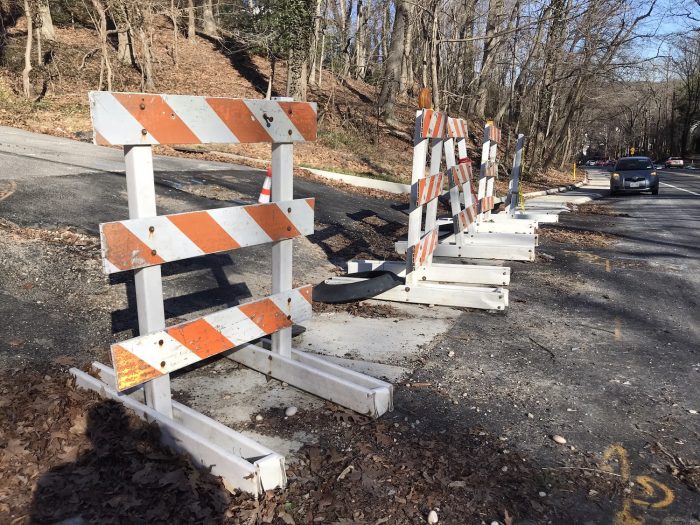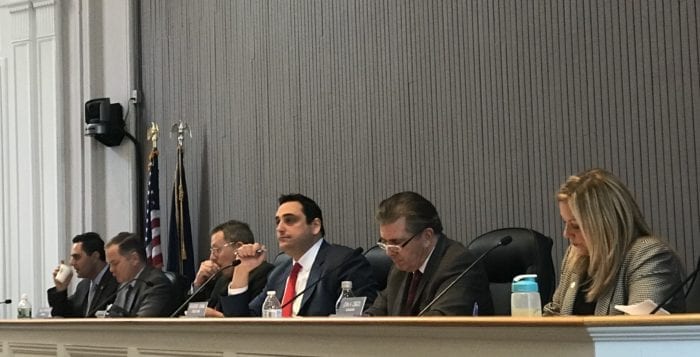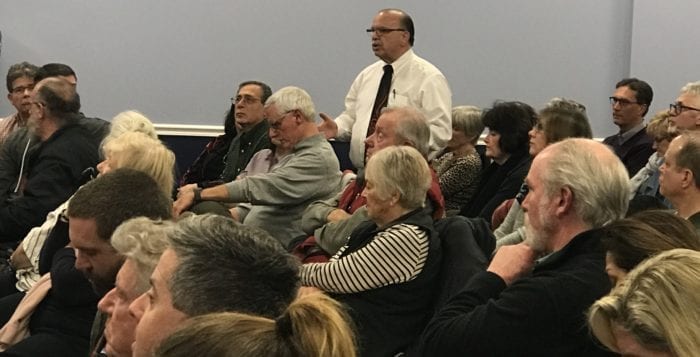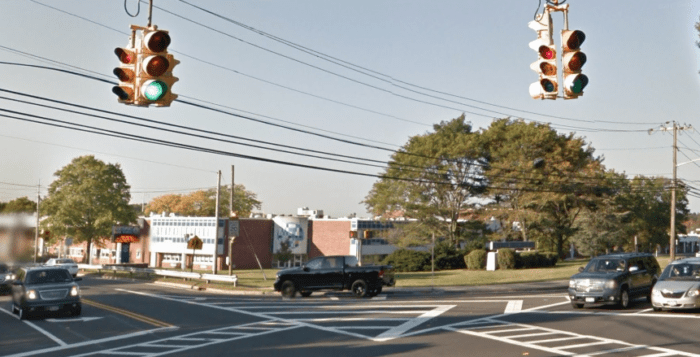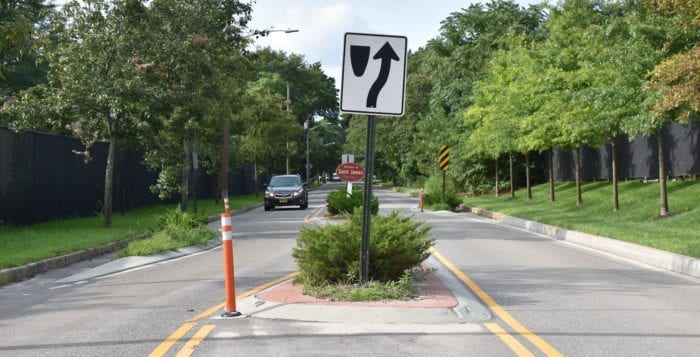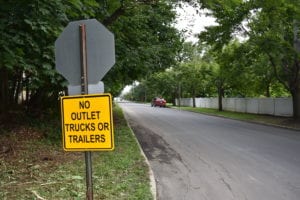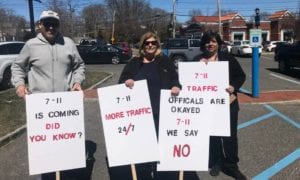The Village of Port Jefferson Board of Trustees held its biweekly business meeting on Monday, Aug. 21, accompanied by a public hearing to consider adding north- and south-facing stop signs on the west and east sides of Scraggy Hill Road.
Public hearing
Situated at Scraggy Hill Road is the Edna Louise Spear Elementary School. Speed tables currently help to slow traffic around the school.
Village attorney David Moran explained the purpose behind the public hearing, stating that adding or removing all village stop signs requires an amendment to the village code, “and in order to add a stop sign to the village, you have to go through this process.”
During the public hearing, Ray DiBiase, the village’s Planning Board chair and a nationally certified traffic operations engineer, noted the issue of people driving around the speed tables on the roadway. “My first inclination would be to extend those speed tables,” he suggested.
Several neighbors turned out Monday night, shedding light on the situation. Stella Cohen reported that village stop signs are routinely disregarded and that the issue could only be resolved with adequate traffic enforcement.
“I have no objection to this motion whatsoever, but it’s paying lip service to a problem you’re not going to fix with a stop sign,” Cohen said. “I would respectfully ask the board, in addition to considering this motion, to also [consider] a motion on a future date for speed cameras.”
Ernie Geiger, another resident, summarized the “nightmare” situation around the elementary school. He advised the board to hire a traffic specialist.
“I think that what you’re looking at now is the tip of the iceberg, and I really don’t think that stop signs are going to do any good at this point,” he told the board. “I think somebody should look at it, look at the signage that’s there and make an intelligent decision instead of just throwing up two stop signs.”
Ryan Walker, a trustee of the Port Jefferson School District Board of Education who said he was speaking as a resident, advised the board that additional signage could complicate “traffic patterns that are already a mess.”
Instead, he proposed coordinating with the Suffolk County Police Department for more traffic enforcement along the roadway.
Following the public comments, the board did not hold a vote on the proposed code amendment to add the stop signs.
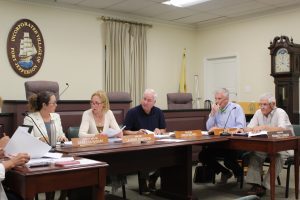
Audit report
Christopher Reino, a partner at the Port Jefferson Station-based Cullen & Danowski — the firm that conducts the village’s annual independent audit — delivered a presentation on the report from the 2022 fiscal year.
Mayor Lauren Sheprow said the audit report was presented to the treasurer’s office on Jan. 4, 2023, noting, “That report was addressed to the Board of Trustees.”
“Upon canvassing,” the mayor said she had discovered that “the current board members who were board members on Jan. 4, 2023, had not seen that report.”
Moran remarked upon “another flaw in the process,” indicating that when a village uses an outside audit firm and files with the village clerk, “there needs to be a public notice that that report is available at Village Hall for anyone to come and review it,” adding, “As far as I know, that hasn’t happened either.”
During his presentation, Reino reported that the village’s fiscal health has “been looking positive.”
“The fund balance has been growing,” he said. “You actually have a balanced budget now — in the past, you were using some of your existing fund balance to fund the budget, but right now, you’re pretty much at a break even.”
Revenues, he added, are aligned with expenditures, suggesting that the village currently has “a realistic budget.” The “only concern I had,” Reino said, was the lack of “a complete inventory,” which could assist the village in conducting insurance appraisals.
East Beach bluff
Conversations continued over the two-phased bluff stabilization project at East Beach.
For the proposed upland wall to fortify the restaurant/catering facility of the Port Jefferson Country Club, Sheprow reported that the village government is still “waiting on a response from [the U.S. Federal Emergency Management Administration] to see if that [$3.75 million] grant is coming through.” [See story, “Schumer secures funds for upper wall at PJCC…” Jan. 11, TBR News Media website.]
The current engineering plans include the addition of steel beams, according to Sheprow, who estimated that they could cost the village approximately $18,000 per beam.
The board approved an add-on resolution approving services from Huntington Station-based engineering firm GEI Consultants for up to $9,200, which Sheprow contended could help the village save hundreds of thousands of dollars on the upper wall project.
“What GEI is being asked to do is take a look at that project description to see if the removal of all those beams would work,” the mayor said. “The supposition is that that would still work and perhaps even make it more stable.”
She added that the modification in engineering plans could save the village roughly $300,000 on the upper wall project, “spending a few thousand to save a few hundred thousand.”
To watch the entire meeting, including trustee reports, please see the video above.

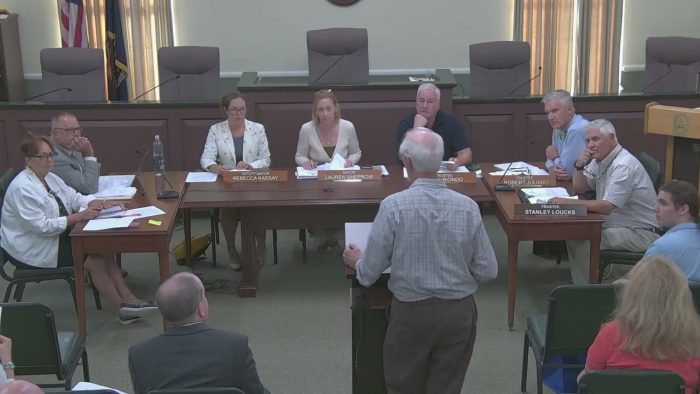
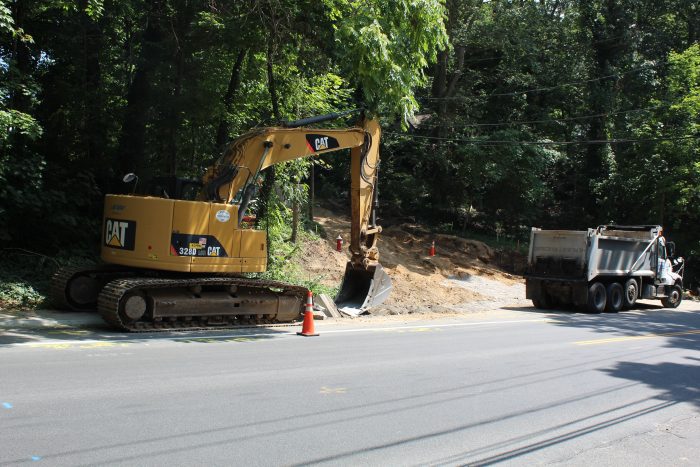
 Seeing this as a public safety hazard, village officials closed down the intersection to traffic, igniting an intergovernmental dispute between the village and DOT.
Seeing this as a public safety hazard, village officials closed down the intersection to traffic, igniting an intergovernmental dispute between the village and DOT. Responding to the ongoing construction, Joe Palumbo, the village administrator, offered thanks to DOT and to state Sen. Anthony Palumbo (R-New Suffolk) for expediting the reconstruction efforts. The Palumbos are not related.
Responding to the ongoing construction, Joe Palumbo, the village administrator, offered thanks to DOT and to state Sen. Anthony Palumbo (R-New Suffolk) for expediting the reconstruction efforts. The Palumbos are not related.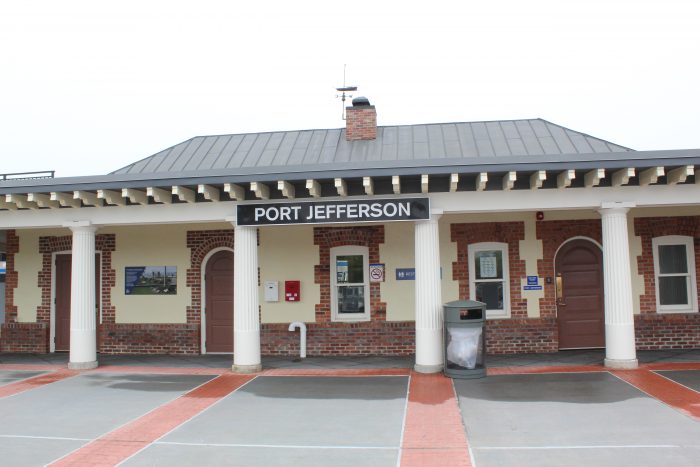
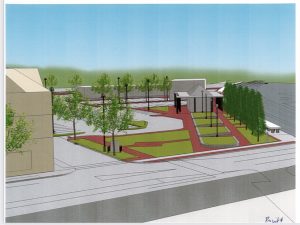
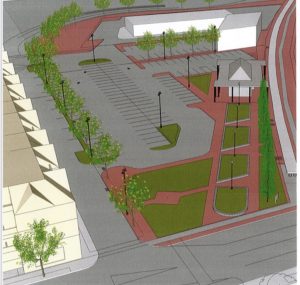 The Station Street project has been in the works since 2016, when the village approved a master plan to revitalize Upper Port. As part of joint efforts between the village, the Town of Brookhaven, LIRR and the state Department of Transportation, the proposed Station Street would create a plaza that will help channel traffic from the main thoroughfare, alleviating congestion as drivers enter the village.
The Station Street project has been in the works since 2016, when the village approved a master plan to revitalize Upper Port. As part of joint efforts between the village, the Town of Brookhaven, LIRR and the state Department of Transportation, the proposed Station Street would create a plaza that will help channel traffic from the main thoroughfare, alleviating congestion as drivers enter the village.